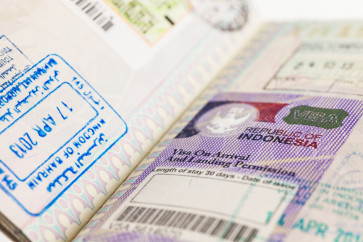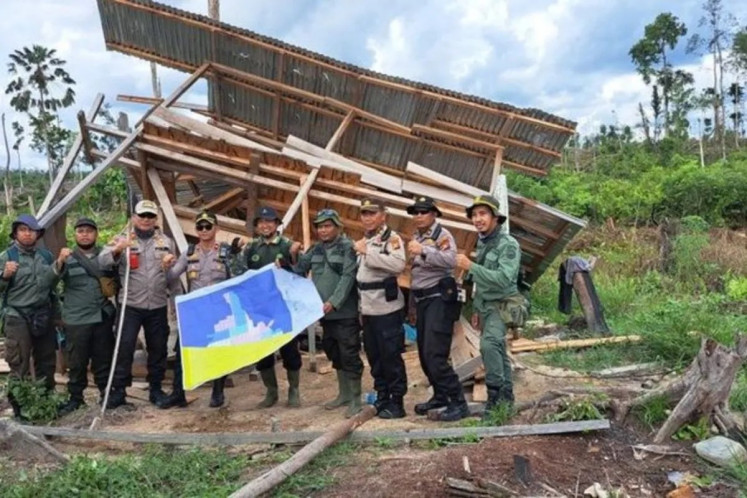Popular Reads
Top Results
Can't find what you're looking for?
View all search resultsPopular Reads
Top Results
Can't find what you're looking for?
View all search resultsWhen it comes to climate change, we have no planet B
You have a plan
Change text size
Gift Premium Articles
to Anyone
Y
ou have a plan. It does not work. You switch to plan B. When it comes to climate change and the worst possible damage affects our Earth, we have no planet B to move to.
“There is no planet B” is the title of a British Council pamphlet on climate change programs that the Indonesia office of the London-based education and culture-promoting institute has in place.
The British Council was one of more than 20 participants in the first-ever Indonesia Climate Change Education Forum and Expo at the Jakarta Convention Hall on May 26-29. The National Council on Climate change (DNPI) hosted the forum which had the theme “A call to cope with the climate crisis”.
Indeed, local and central government offices, private firms, environment NGOs, media outlets, international organizations and foreign embassies participated in answering that call. Many school-age children came to listen and learn. For the non-expert, the forum was a copious clearinghouse of current information on climate change.
DNPI, for instance, distributed a single, A4-sized flow chart explaining the impact of climate change in Indonesia on seven levels.
Human activity in the use of fossil fuels and changing land-use practices produce greenhouse gas
emissions, particularly carbon dioxide. That in turn causes the greenhouse effect.
The greenhouse effect causes global warming which brings about climate change indicated by a change in rainfall patterns, an increase in temperature, and rise in the level of seawater. These three climate change indicators have impacts.
Climate change impact would affect health, agriculture, forests, social-economic activities, water resources, the coastline and the seas, species and their natural habitat, the flow chart explained.
The reverse side of the information sheet advised on five things individuals can do to reduce global warming and climate change: less use of electricity for home lighting, unplugging electric appliances when not in use, not making air conditioning cooler than necessary, reducing plastic bag use, and separating organic and non-organic waste. The sheet ends with an exhortation: do it now!
Another DNPI pamphlet explained the role of the forests and the REDD program in reducing greenhouse gas emissions from deforestation and forest degradation. .
Meanwhile, the skin lotion company The Body Shop gave out a carbon wheel that showed users how they could calculate their carbon output. You are an office worker using 10 sheets of paper on a given work day. You have burned 2,270 grams of carbon dioxide.
At home, your kitchen produces one kilogram of organic waste. This results in 1.12 grams of CO2. You drive to work. For every one kilometer of travel, you emit 14.6 grams of carbon. Like the DNPI flow chart sheet, the carbon wheel suggested tips on how you could reduce your carbon emissions.
The Norwegian embassy stand had a Q&A sheet explaining the working of the US$1 billion Indonesian-Norwegian REDD+ partnership signed on May 26, 2010 in Oslo.
It answered nine frequently asked questions the embassy gets, from why Norway chose Indonesia to give the money to whether Norway had any qualms that the funds might be squandered due to corruption.
For that last question the answer is Indonesia had “a good record” in managing the US$7 billion from foreign donors to rehabilitate and reconstruct Aceh and Nias after the devastating 2004 tsunami.
“The principle of good governance will similarly be applied for the special agency that will be established to manage the development and implementation of REDD+ in Indonesia,” the Norwegian embassy handout said.
Of equal interest was the British Council’s C4C (Climate for Classrooms) program now covering 90 schools in 15 provinces. Teachers and pupils can find Internet-based C4C material in id.climate4classrooms.org. An English version is in www.climate4classrooms.org.
Visitors can access modules from what is climate change to what the future holds. Teachers can find a lesson plan. Climate generation mentors from local environment NGOs or community groups participate in the teach-and-learn exchange.
Engaging people in climate change when they are still children should be the rule as there is no planet B for their future and their children. Children outside Jakarta should benefit too with a C2C (city to city) education forum and expo road show.
The writer teaches journalism at the Dr Soetomo Press Institute (LPDS) in Jakarta.










